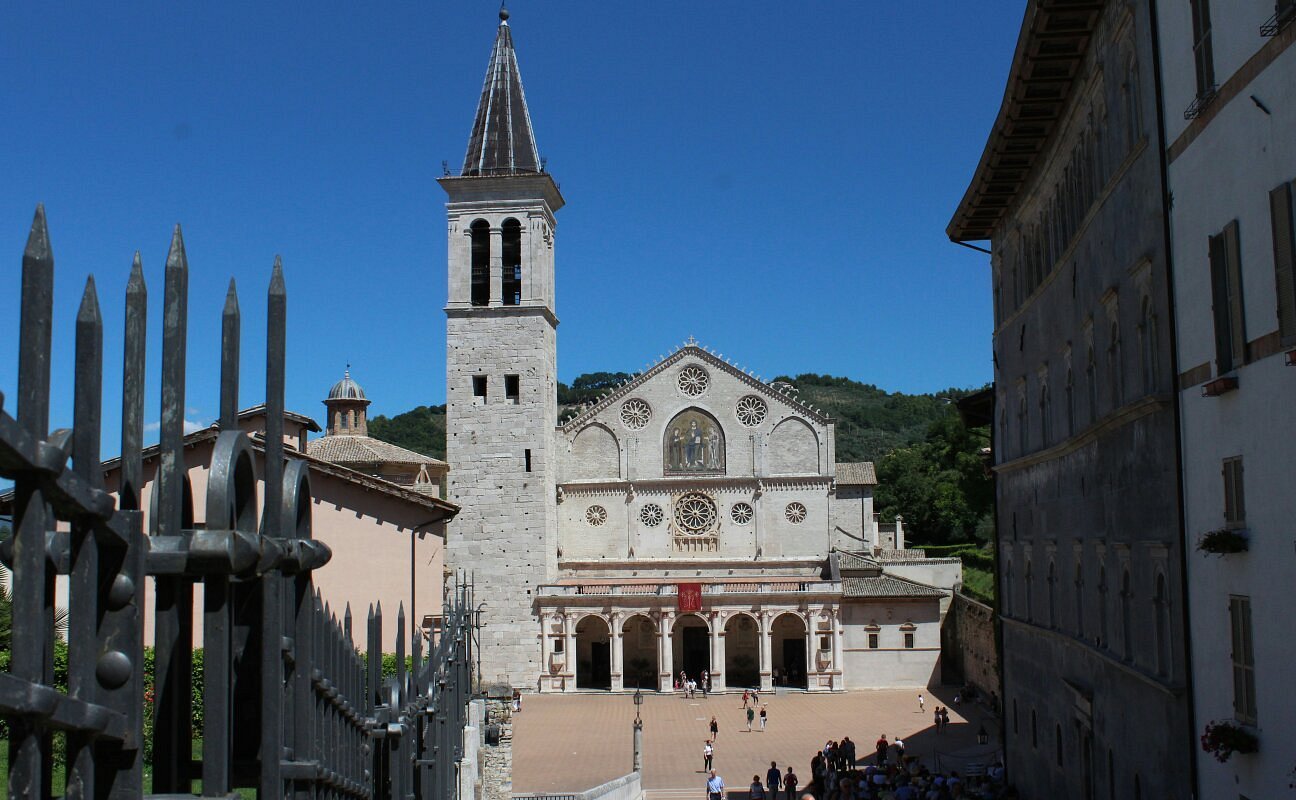Walking through Spoleto feels like stepping into a history book. At every corner, a new chapter reveals itself. The town’s story begins in the Bronze Age, but the Romans truly shaped Spoleto when they made it a colony in 241 BC. Today, this Umbrian gem offers visitors a rare opportunity to witness both impressive Roman ruins and medieval masterpieces within a compact historic center.
As I wandered through Spoleto’s streets last summer, I was struck by how ancient and medieval structures blend together. The Roman theater still stands proudly, its stone seats silent witnesses to centuries of history. Just a short walk away, the magnificent Ponte delle Torri spans a deep gorge, a 14th-century bridge built on Roman aqueduct foundations. This striking structure alone makes Spoleto worth the visit.
The best way to experience Spoleto is on foot. You can start at the lower town and make your way up through the winding medieval streets to the hilltop fortress. Along this walking route, you’ll pass countless landmarks that tell the story of this unique Italian town. What makes Spoleto special isn’t just its individual monuments but how they come together to create a living timeline of Italy’s rich history.
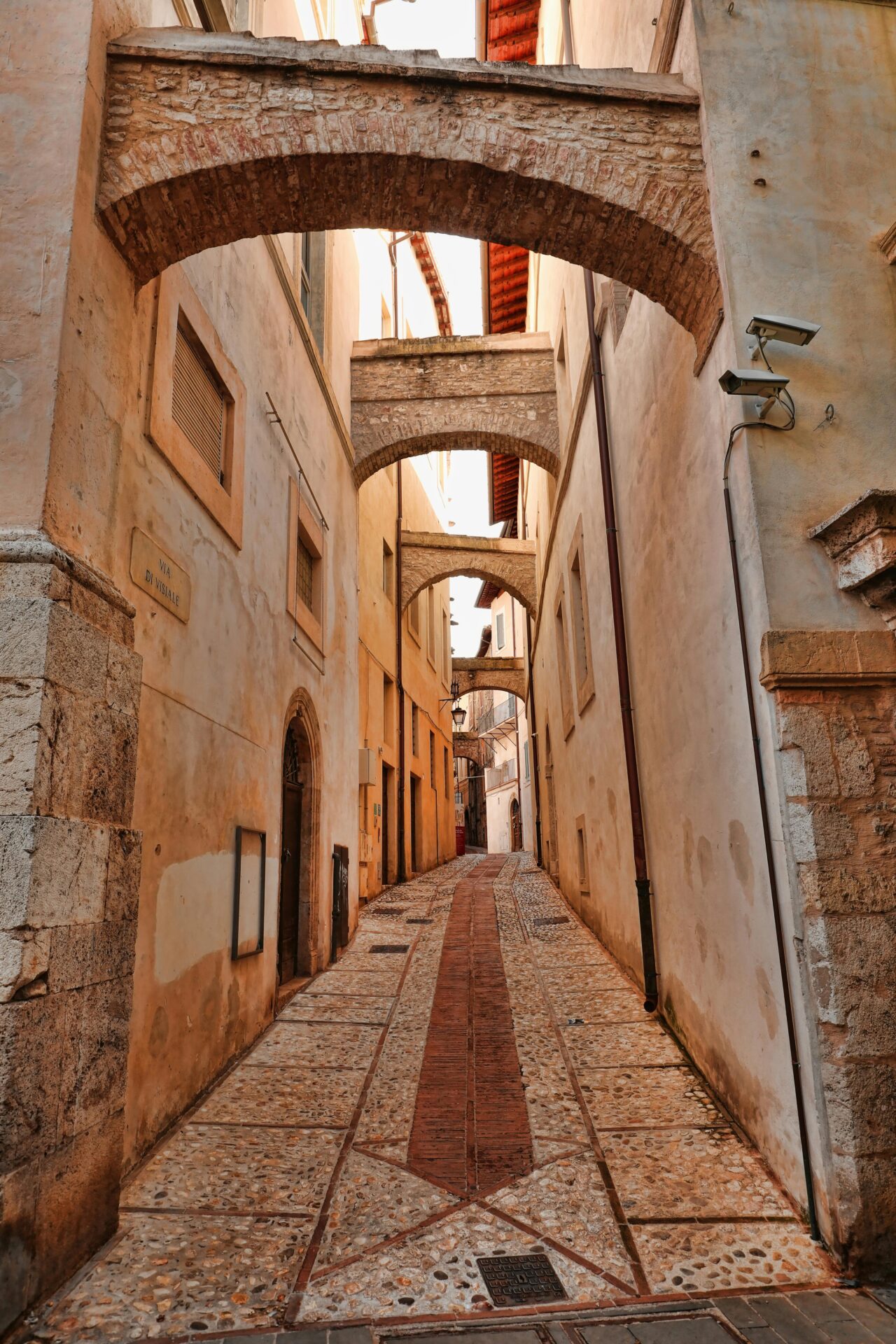
The Roman Foundations of Spoleto
Spoleto’s ancient past is visible at almost every turn as you explore this hillside town. Roman ruins blend seamlessly with medieval architecture, showing how each era built upon the foundations laid by the Empire beginning in 241 BC.
Tracing the Via Flaminia
Walking through Spoleto today, I can still follow parts of the ancient Via Flaminia. The Roman road once connected Rome to the Adriatic coast. Built in 220 BC under Consul Gaius Flaminius, this road transformed Spoleto from a small settlement into a strategic Roman colony.
The Romans recognized Spoleto’s value early, establishing it as one of their key outposts in Umbria. Parts of the original Roman walls still stand, particularly impressive near the Porta Fuga (Gate of Flight), named after Hannibal’s unsuccessful siege.
During my visit, I discovered how the Via Flaminia shaped the town’s layout. The road’s path through Spoleto determined where important buildings were constructed and influenced the street pattern that persists today.
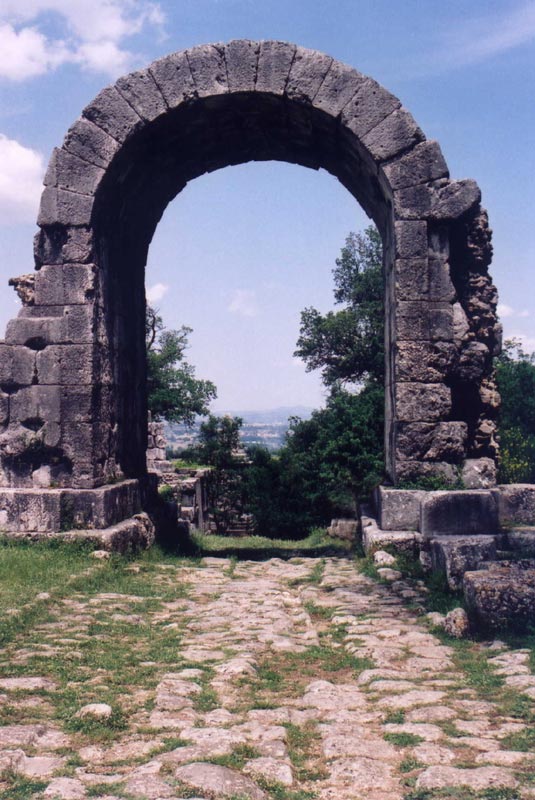
The Grandeur of the Roman Theatre
One of my favorite Roman sites in Spoleto is the well-preserved Roman theatre. Built in the 1st century AD, it could once seat about 3,000 spectators on its semicircular tiers.
The theatre sits at the edge of what was the ancient Roman forum. Its architectural features showcase classic Roman engineering with impressive acoustics that still work remarkably well today.
Walking among the stone seats, I tried to imagine performances that once entertained citizens here. The theatre remains active even now, hosting performances during the famous Spoleto Festival.
Behind the theatre, excavations have revealed columns and other architectural elements. These findings help archaeologists understand how the Romans constructed these impressive entertainment venues throughout their empire.

Exploring the Roman House and Mosaics
Near the theatre lies the Roman House, dating to the 1st century AD. This elegant domus gives a glimpse into the everyday life of wealthy Romans in Spoleto.
The house features a stunning collection of mosaics with intricate geometric patterns and mythological scenes. The black and white tessellated floors are particularly well-preserved and show the sophisticated artistic skills of Roman craftsmen.
I was captivated by the house’s layout, which follows the typical Roman plan with an atrium, impluvium (rainwater collection basin), and several rooms arranged around central spaces.
The wall paintings, though fragmentary, retain enough vibrant color to hint at their original splendor. These decorations reflect both local tastes and broader Roman artistic trends.
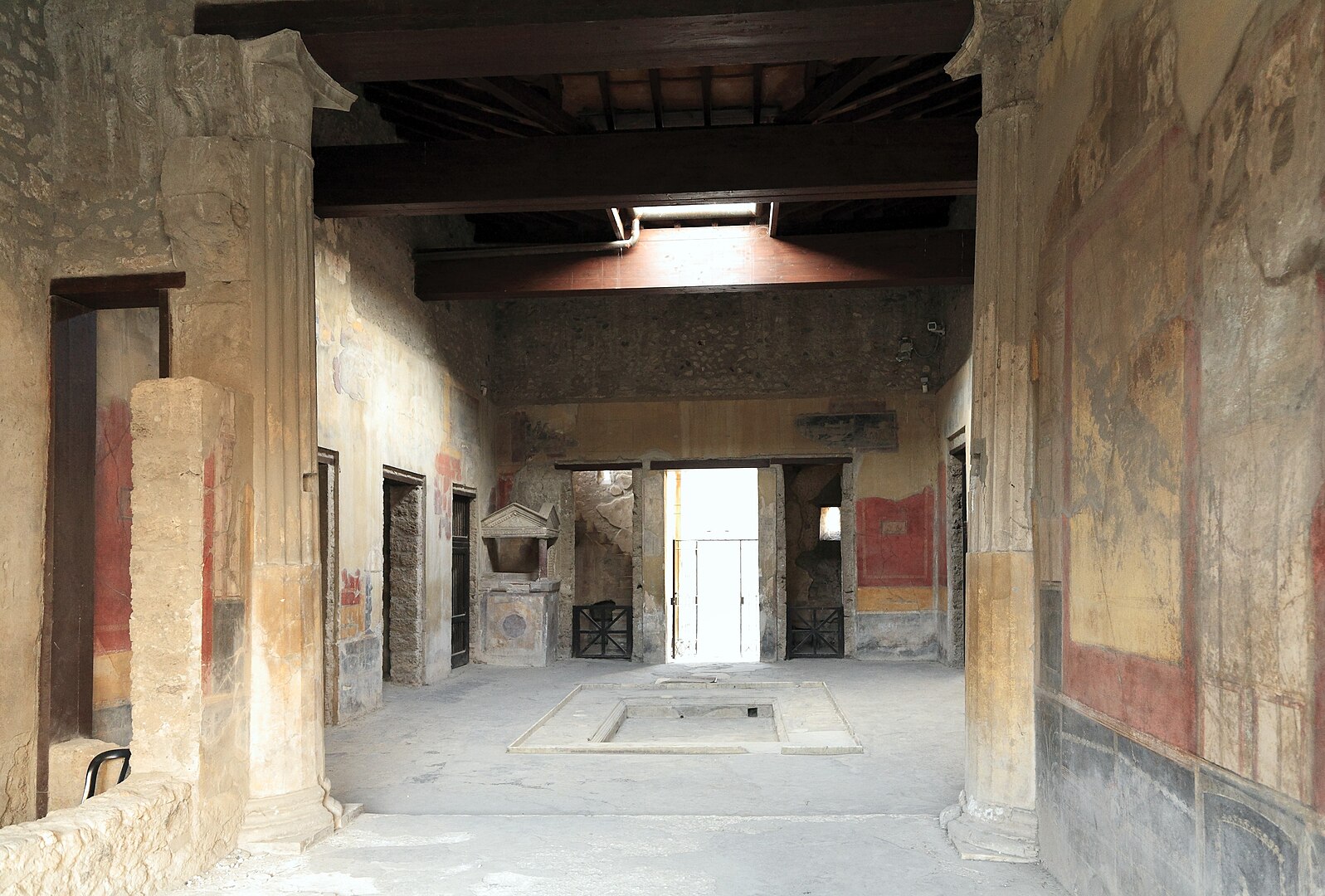
The Legacy of the Roman Bridge
Perhaps most impressive is the Ponte Sanguinario (Bloody Bridge), a Roman bridge dating to the 1st century BC that runs beneath today’s modern streets. The name refers to early Christian martyrdoms that supposedly occurred here.
This six-arched stone bridge once carried the Via Flaminia over a stream. Though partially buried now, visitors can descend below street level to view this remarkable example of Roman engineering.
The bridge’s construction techniques reveal the Romans’ mastery of arch technology. The precisely cut stones fit together without mortar yet have withstood earthquakes and floods for over two millennia.
The bridge’s design influenced later medieval structures in Spoleto, particularly the magnificent Ponte delle Torri aqueduct, which was built on Roman foundations and stands as testament to how each era in Spoleto built upon what came before.
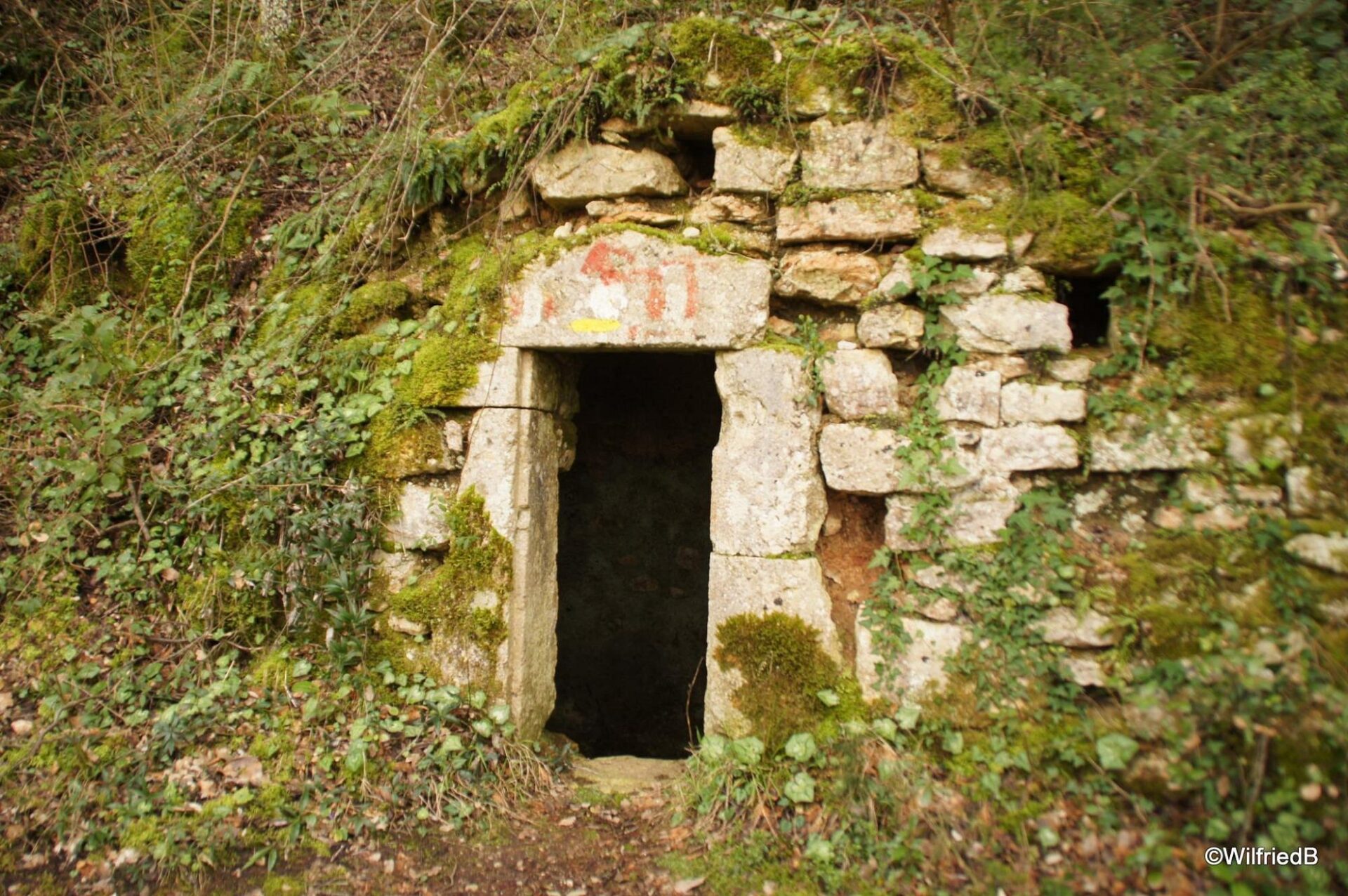
Medieval Spoleto: Castles, Cathedrals, and Squares
Walking through Spoleto today, I’m constantly struck by how the town’s medieval glory still dominates its landscape. After the fall of Rome, Spoleto became a powerful Lombard duchy, leaving behind impressive structures that tell stories of faith, power, and daily life.
The Might of Rocca Albornoziana Fortress
Perched atop Sant’Elia hill, the imposing Rocca Albornoziana watches over Spoleto like a stern guardian. Built in the 14th century by Cardinal Albornoz, this massive fortress was meant to reassert papal control over the region. I spent hours exploring its six towers and two courtyards, each telling tales of medieval military might.
The fortress’s strategic position offers breathtaking views of the Umbrian valley below. What fascinates me most is how the Rocca served multiple purposes throughout history – from military stronghold to papal residence and later as a prison until the 1980s.
Inside, you’ll find the National Museum of the Duchy of Spoleto, showcasing artifacts that highlight the town’s importance during the Lombard rule. The perfectly preserved architecture gives you a real sense of medieval defensive engineering.

The Spiritual Heart at the Duomo
The Cathedral of Santa Maria Assunta (the Duomo) stands as Spoleto’s spiritual center. Built in the 12th century, its Romanesque façade with its magnificent rose window stopped me in my tracks when I first saw it.
Inside, I discovered an unexpected treasure – frescoes by Filippo Lippi, including his masterpiece depicting scenes from the Virgin Mary’s life. The cathedral’s blend of Romanesque and early Gothic elements reflects the artistic transitions of medieval times.
What many visitors miss is the beautiful mosaic floor with intricate geometric patterns. I recommend visiting in the morning when sunlight streams through the stained glass, creating a mystical atmosphere that medieval worshippers would have experienced.
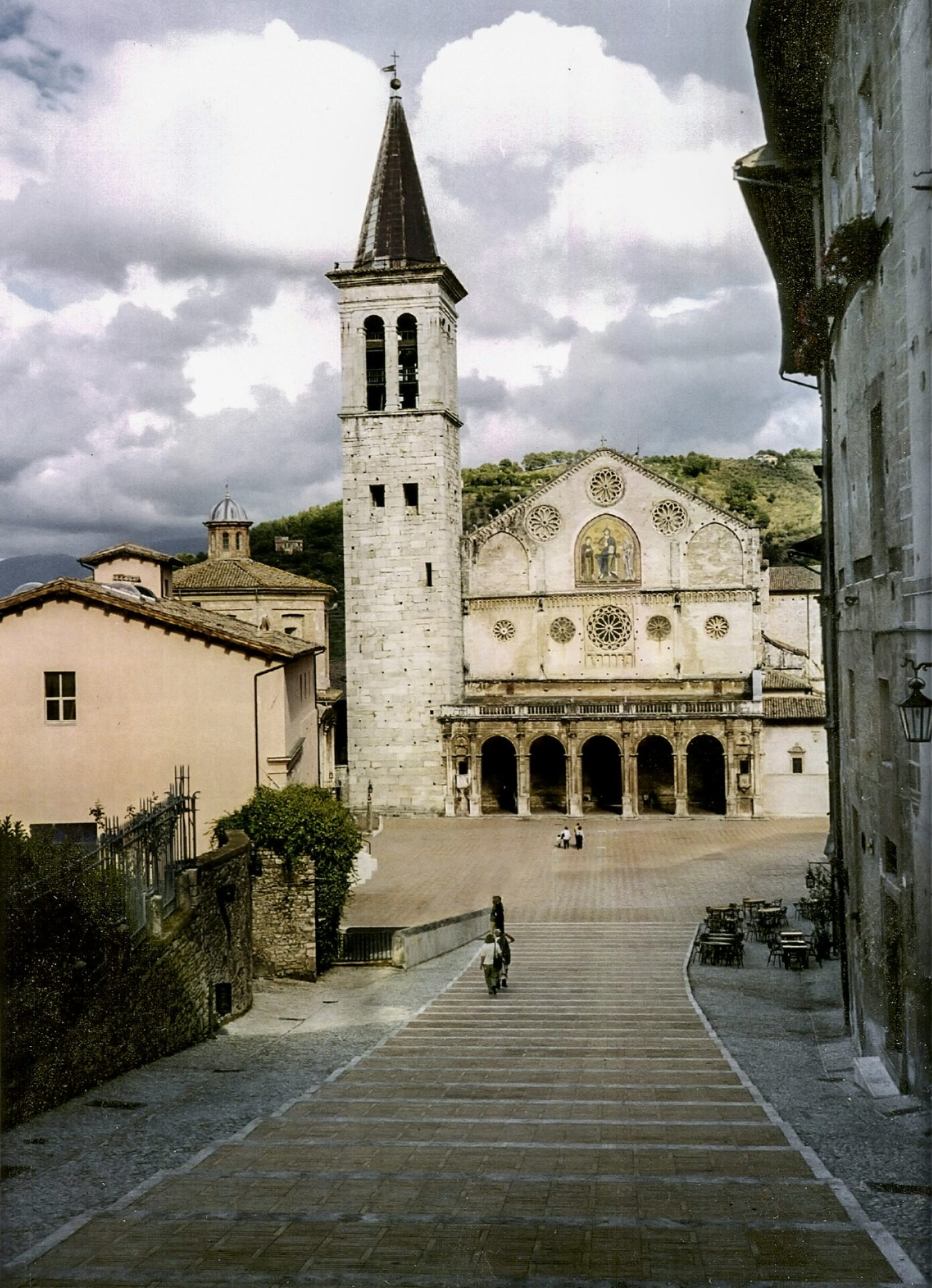
Life in the Piazza: From Market to Freedom
Piazza del Mercato, built over an ancient Roman forum, pulses with the echoes of medieval daily life. This was where Spoleto’s citizens gathered, traded goods, and shared news. Walking across its stones, I imagined the bustling market scenes from centuries past.
Nearby, Piazza della Libertà (Freedom Square) served as the civic heart of medieval Spoleto. The elegant town hall and 13th-century fountain speak to the growing independence of Italian city-states during this period.
These squares weren’t just places for commerce but social centers where public proclamations were made and festivals celebrated. I love sitting at a café in one of these piazzas, watching modern life unfold in spaces virtually unchanged for 800 years.

Connecting Times: The Ponte delle Torri
Standing at the edge of Spoleto, I’m mesmerized by the Ponte delle Torri (Bridge of Towers), a breathtaking medieval aqueduct that spans 760 feet across a deep, tree-filled gorge. At 264 feet high, this magnificent structure offers some of the most spectacular views in Umbria.
The bridge connects the town of Spoleto with Monteluco, creating not just a physical passage but a journey through time. When I walk across, I can almost feel the centuries of history beneath my feet.
What makes this landmark truly special is how it connects different eras of Spoleto’s rich past. Historians believe it was built on the foundation of a Roman-era aqueduct, later transformed during the medieval period.
The bridge features ten impressive arches and is flanked by two towers that give it its name. I always recommend bringing a sturdy rope if you plan to explore some of the less accessible viewpoints around the bridge—safety first!
From the center of the bridge, I can see the imposing Rocca Albornoziana fortress looming above the town. These two structures have a special relationship—the fortress and bridge together formed part of Spoleto’s medieval defense system.
The best time to visit is late afternoon when the sunlight bathes the ancient stones in a golden glow. The path to and across the bridge is well-maintained, making it accessible for most visitors.
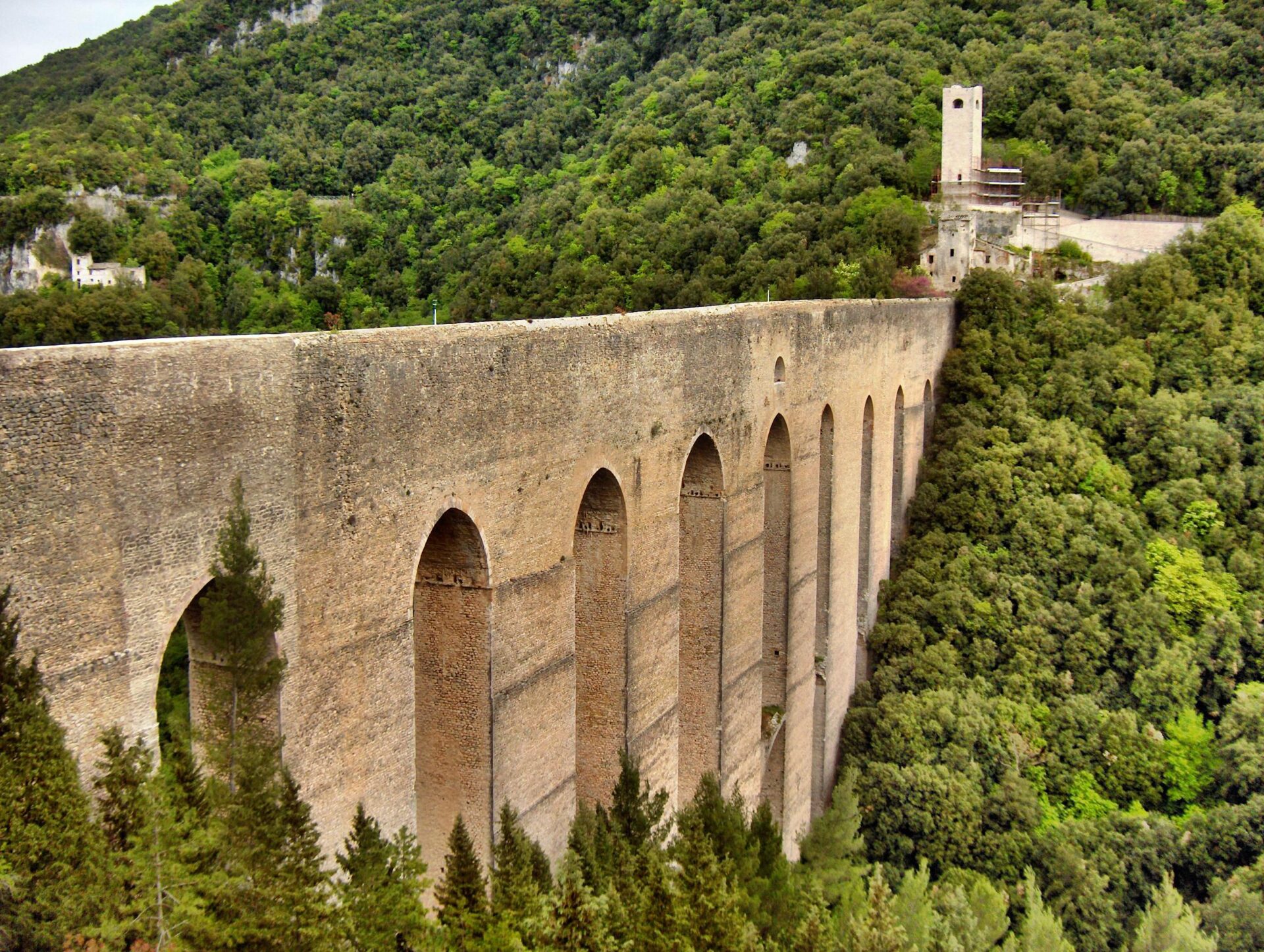
The Cultural Canvas of Spoleto
Walking through Spoleto is like flipping through pages of a living art book. The city’s cultural heritage spans centuries, creating a unique blend of artistic traditions that continue to thrive today.
Celebrate Tradition at the Festival dei Due Mondi
I first discovered Spoleto’s vibrant cultural scene during the Festival dei Due Mondi (Festival of Two Worlds). Founded in 1958 by composer Gian Carlo Menotti, this annual summer festival transforms the historic town into a global stage.
For three weeks, I wandered between medieval buildings watching world-class performances in dance, music, theater, and visual arts. The Roman Theater becomes an enchanting venue for evening concerts, while Piazza del Duomo hosts spectacular open-air events.
What makes this festival special is how it blends international performers with local Italian traditions. I’ve seen everything from avant-garde theater to classical symphony orchestras echoing through ancient stones.
The festival attracts visitors from across the globe, yet maintains an intimate feel that larger events often lose.
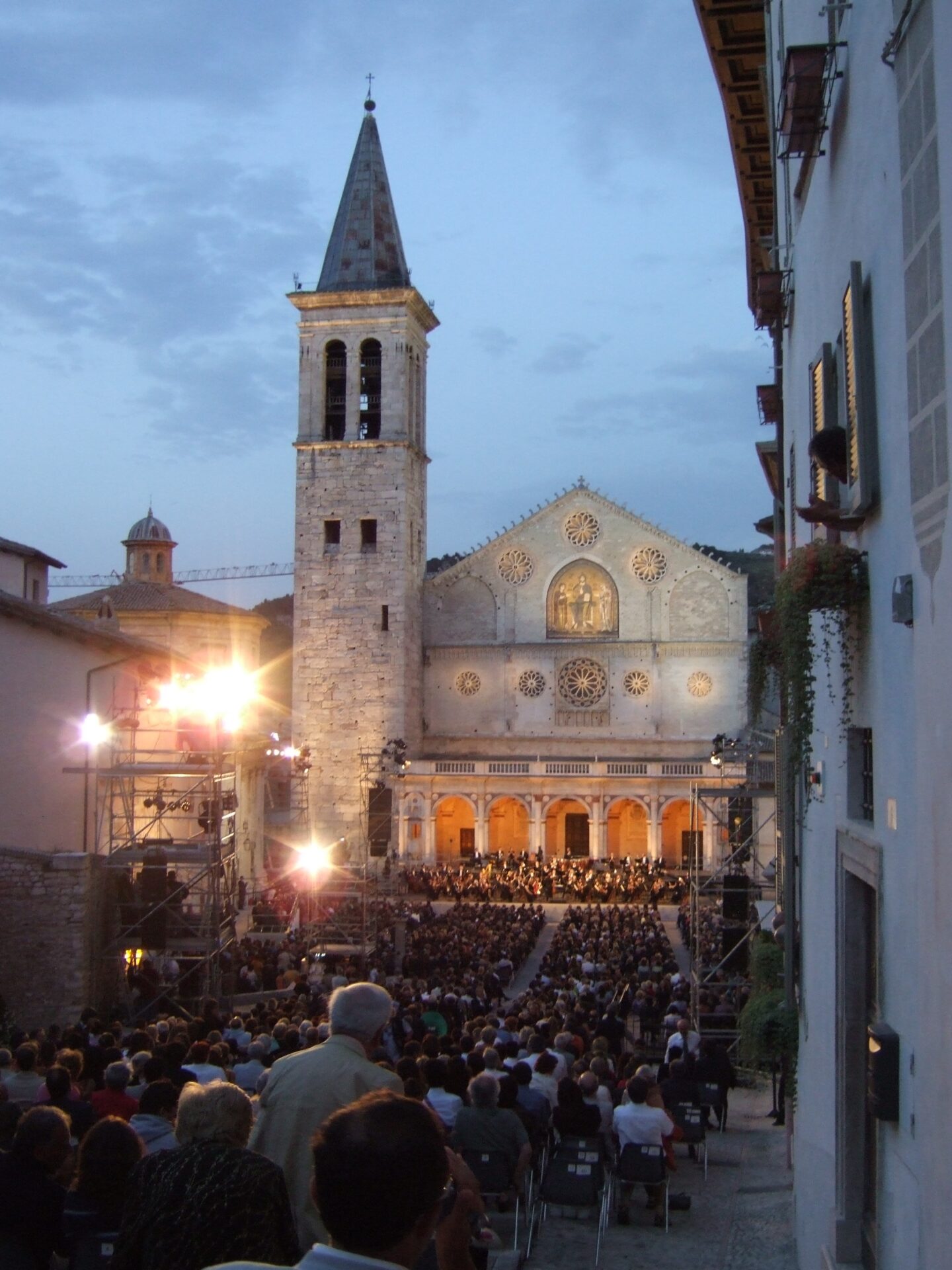
Artistic Revelations: Filippo Lippi and Pinturicchio
Spoleto’s art heritage extends far beyond festival season. I spent hours in the Duomo admiring Filippo Lippi’s magnificent frescoes in the apse. His Renaissance masterpiece depicts scenes from the life of the Virgin Mary with striking color and emotion.
The Comune di Spoleto preserves numerous other treasures. In the Pinacoteca, I discovered works by Pinturicchio whose delicate brushwork captures medieval life with remarkable detail.
What surprised me most was finding artistic gems in unexpected places. Small churches tucked away on narrow streets often house stunning frescoes or sculptures that rival those in major museums.
The artistic timeline here flows seamlessly from Roman elegance to medieval craftsmanship to Renaissance brilliance, all preserved within Spoleto’s ancient walls.
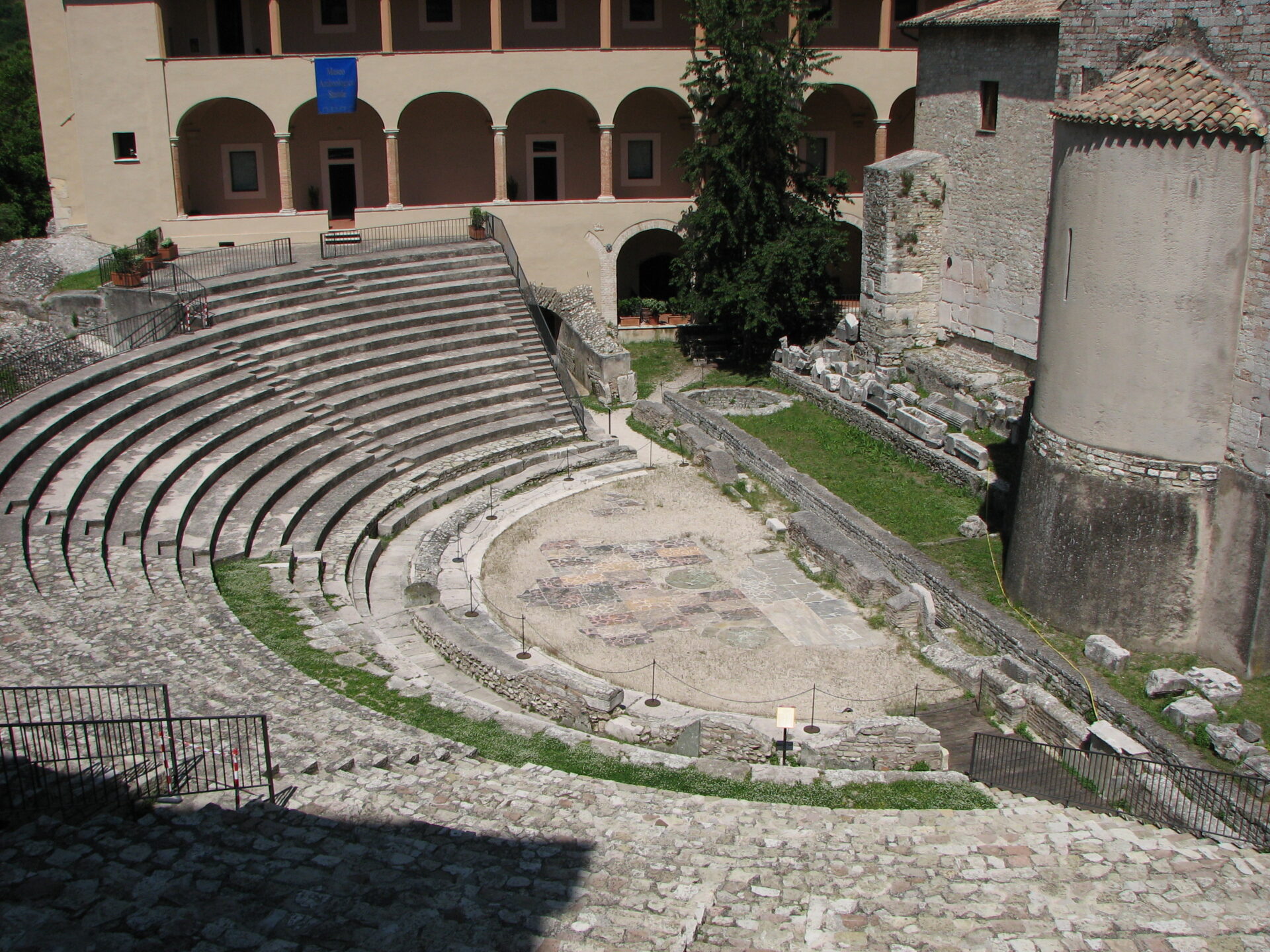
Savoring Spoleto: Gastronomy and Stay
After days of exploring Spoleto’s rich history, I found that the town’s culinary traditions and accommodations are just as impressive as its architectural wonders.
Feasting at Local Haunts: Osteria del Matto and Il Tempio del Gusto
Osteria del Matto quickly became my favorite dining spot in Spoleto. The name translates to “The Madman’s Tavern,” and there’s a delightful eccentricity to both the decor and the chef’s approach. I was greeted with a warm welcome and seated at a rustic wooden table surrounded by quirky art.
The menu features traditional Umbrian dishes with fresh, local ingredients. Their truffle pasta melted in my mouth, while the wild boar stew transported me straight to medieval times.
At Il Tempio del Gusto, I discovered a more refined approach to local cuisine. The restaurant specializes in Mediterranean flavors with a focus on healthy, seasonal vegetables. Their saffron risotto with local seafood was a standout dish that balanced richness with delicate flavors.
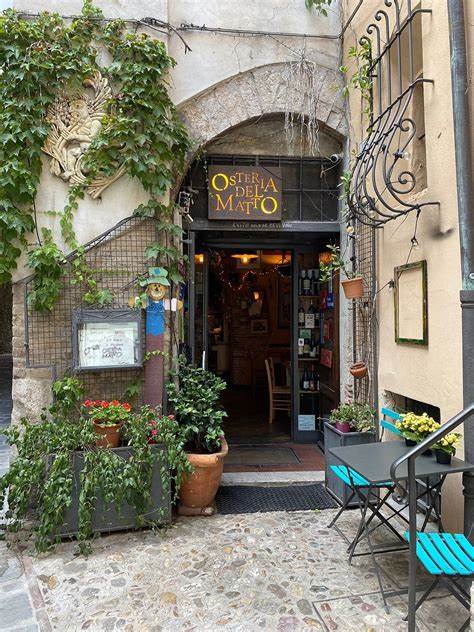
Where to Stay: Palazzo Leti Residenza d’Epoca
For accommodations, I chose Palazzo Leti Residenza d’Epoca. I couldn’t have been happier with my decision. This beautifully restored 13th-century palace offers rooms that blend historic charm with modern comfort.
My room featured original frescoed ceilings, elegant antique furniture, and windows overlooking the verdant Umbrian hills. Despite its historic nature, the palazzo doesn’t skimp on amenities. My bathroom was marble-lined with a rainfall shower.
The garden terrace became my morning sanctuary. I enjoyed breakfast there each day. I savored fresh pastries and local fruit while planning my explorations of Spoleto.
The staff proved exceptionally helpful. They provided insider tips on lesser-known attractions and secured reservations at popular restaurants that might otherwise have been fully booked.

